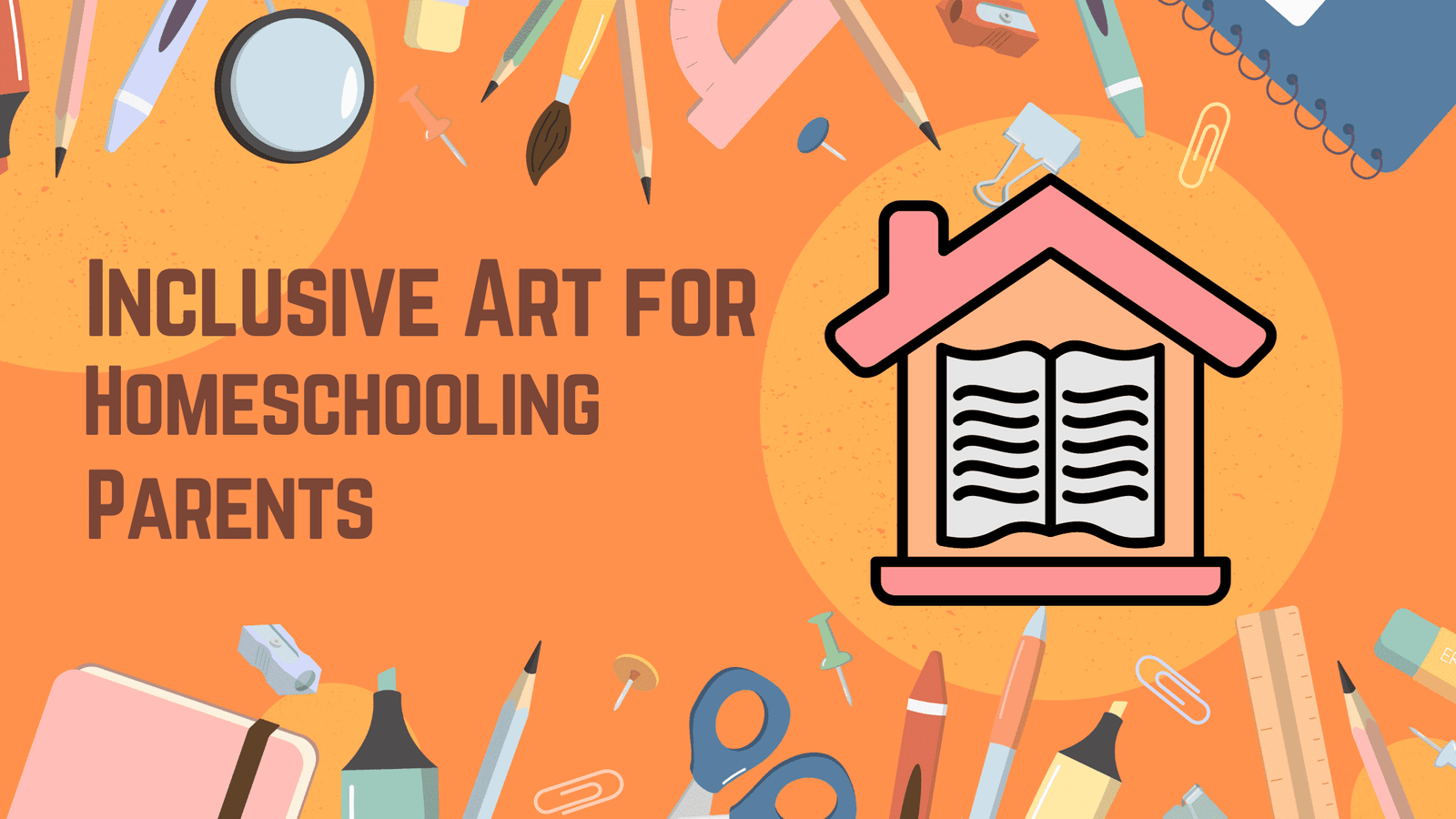Introduction
Art education stands as a cornerstone in the homeschooling journey, providing parents with a unique opportunity to nurture creativity and inclusivity within their children. This is partially the reason Unschooled Art was created….to help homeschooling parents provide a quality art education at home. In this article, we’ll explore specific and in-depth strategies for homeschooling parents to create an enriching and inclusive art education experience.
Understanding Inclusive Art Education
Inclusive art education is not merely a theoretical concept; it’s a lived commitment to embracing diversity at every stage of the creative process. Let’s delve into practical strategies that homeschooling parents can implement to ensure a truly inclusive art education:
- Diverse Representation in Art Materials: Homeschooling parents can actively promote inclusivity by thoughtfully curating art supplies that authentically represent a spectrum of skin tones, abilities, and cultures. By doing so, every stroke of the brush becomes an opportunity for each child to see themselves reflected in their artistic journey. Crayola makes skin color markers, color pencils and crayons. Many companies make skin color construction paper and skin color paints. Do you have any of these products in your homeschool art classroom?
- Tip: Assemble an art supplies kit that celebrates diversity, ensuring it includes a broad range of colors, materials, and textures. This deliberate inclusivity fosters a sense of belonging and cultural representation.
- Incorporating Multicultural Perspectives: Expand your child’s artistic horizons by intentionally introducing them to artists from diverse backgrounds. Delve into various art forms and traditions, aiming not just to educate but to ignite a genuine appreciation for the rich tapestry of cultural diversity.
- Example: Immerse yourselves in the vibrant world of Mexican folk art by creating papel picado or embark on a journey to understand Japanese ink painting techniques. Through these immersive experiences, children learn to express their creativity while gaining insights into different cultural expressions.
- Adaptable Lesson Plans: Recognizing and catering to diverse learning styles and abilities is a cornerstone of inclusive art education. Homeschooling parents can create lesson plans that offer flexibility, ensuring every child can actively participate and thrive in the artistic process.
- Practical Tip: Within each lesson plan, provide options that cater to tactile, visual, and auditory learners. This intentional adaptability not only accommodates diverse learning styles but also encourages a deeper engagement with the artistic content.
Incorporating Scientific Studies
Scientific studies consistently highlight the positive impact of inclusive art education on cognitive and emotional development. Dr. Howard Gardner’s extensive research underscores the pivotal role of artistic experiences in fostering not just creativity but also a holistic understanding of oneself and others.
“Artistic experiences are not merely extracurricular; they are essential for the development of ‘intrapersonal’ intelligence, allowing children to navigate and understand themselves and others on a deeper level.” – Dr. Howard Gardner
There has been lost of studies on how inclusiveness in art positively impacts young children. Here is one helpful resource about creating inclusiveness in an art classroom: https://files.eric.ed.gov/fulltext/EJ1045923.pdf
Art Strategies for Homeschooling Parents
- Art as a Therapeutic Outlet: Beyond the strokes of a paintbrush, art serves as a potent medium for emotional expression. Recognizing the therapeutic potential, homeschooling parents can create a dedicated ‘art therapy’ session, providing a safe space for children to not just create but communicate their feelings.
- Engagement Tip: Encourage open dialogue about their creations, fostering emotional awareness. This intentional interaction transforms the act of creating art into a powerful tool for emotional expression and self-discovery.
- Integrating STEM and Art: Merging the worlds of art and science, technology, engineering, and mathematics (STEM) is not just a creative endeavor but a strategic one. This integration enhances critical thinking skills and introduces children to the multidisciplinary landscape of STEAM (STEM + Art) education, preparing them for a future that demands versatility.
- Keyword: Embrace the synergy of STEM and art with engaging projects that combine creativity and scientific principles. Explore art and science projects that seamlessly blend the imaginative with the analytical, making learning a holistic and dynamic experience.
Education Philosophy
John Dewey’s philosophy on education, emphasizing hands-on and experiential learning, finds a natural application in the realm of art education. Homeschooling parents can create an environment where children actively participate in the artistic process, fostering a sense of ownership and authenticity.
“Art is not the possession of the few who are recognized writers, painters, musicians; it is the authentic expression of any and all individuality.” – John Dewey
Conclusion
In conclusion, the journey of inclusive art education for homeschooling parents is a profound one, rooted in the intentional embrace of diversity and adaptability to individual needs. By incorporating these strategies, parents can cultivate an environment that not only nurtures their child’s artistic talents but also fosters a genuine love for learning that extends far beyond the canvas.


Leave a Reply